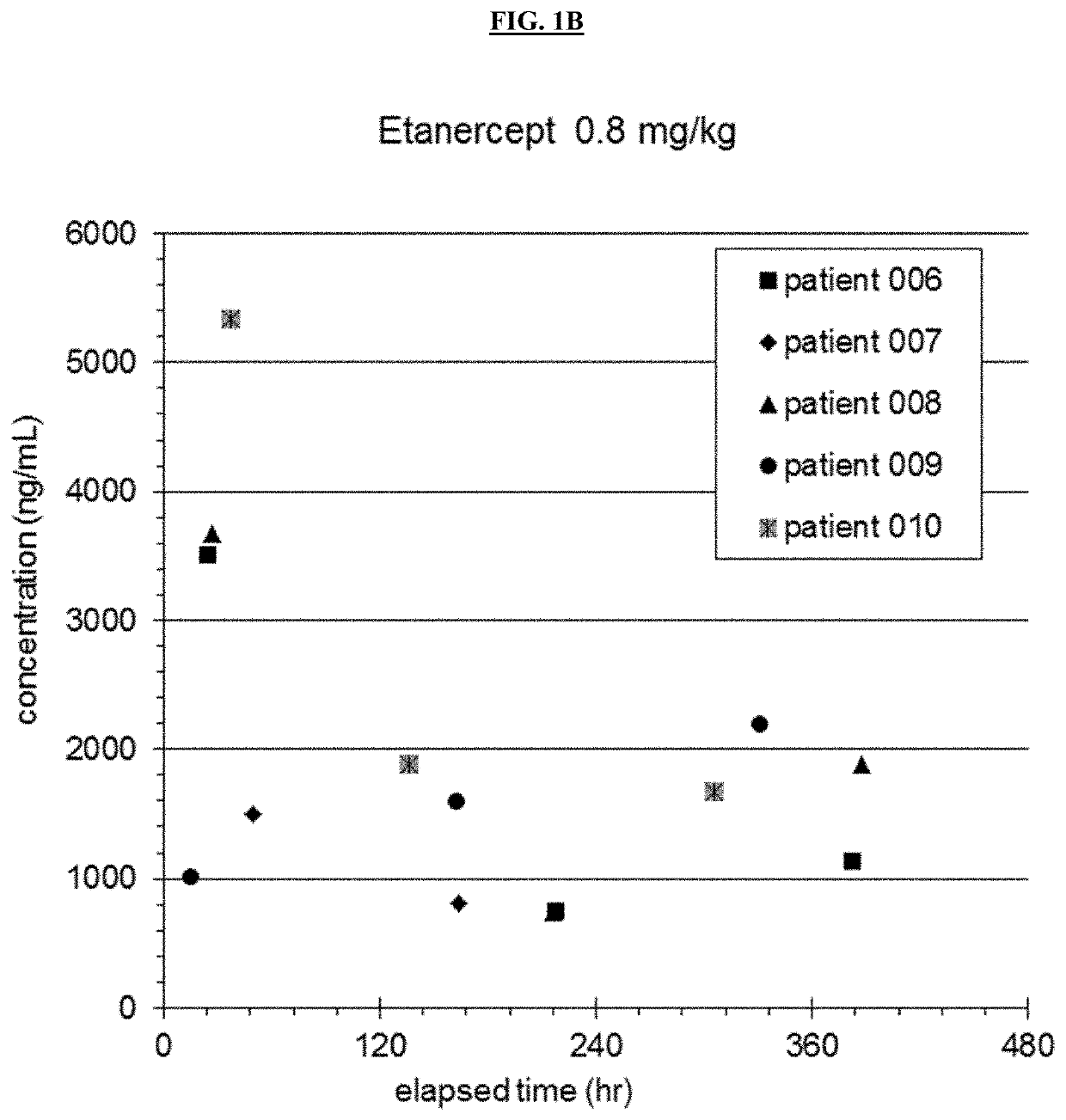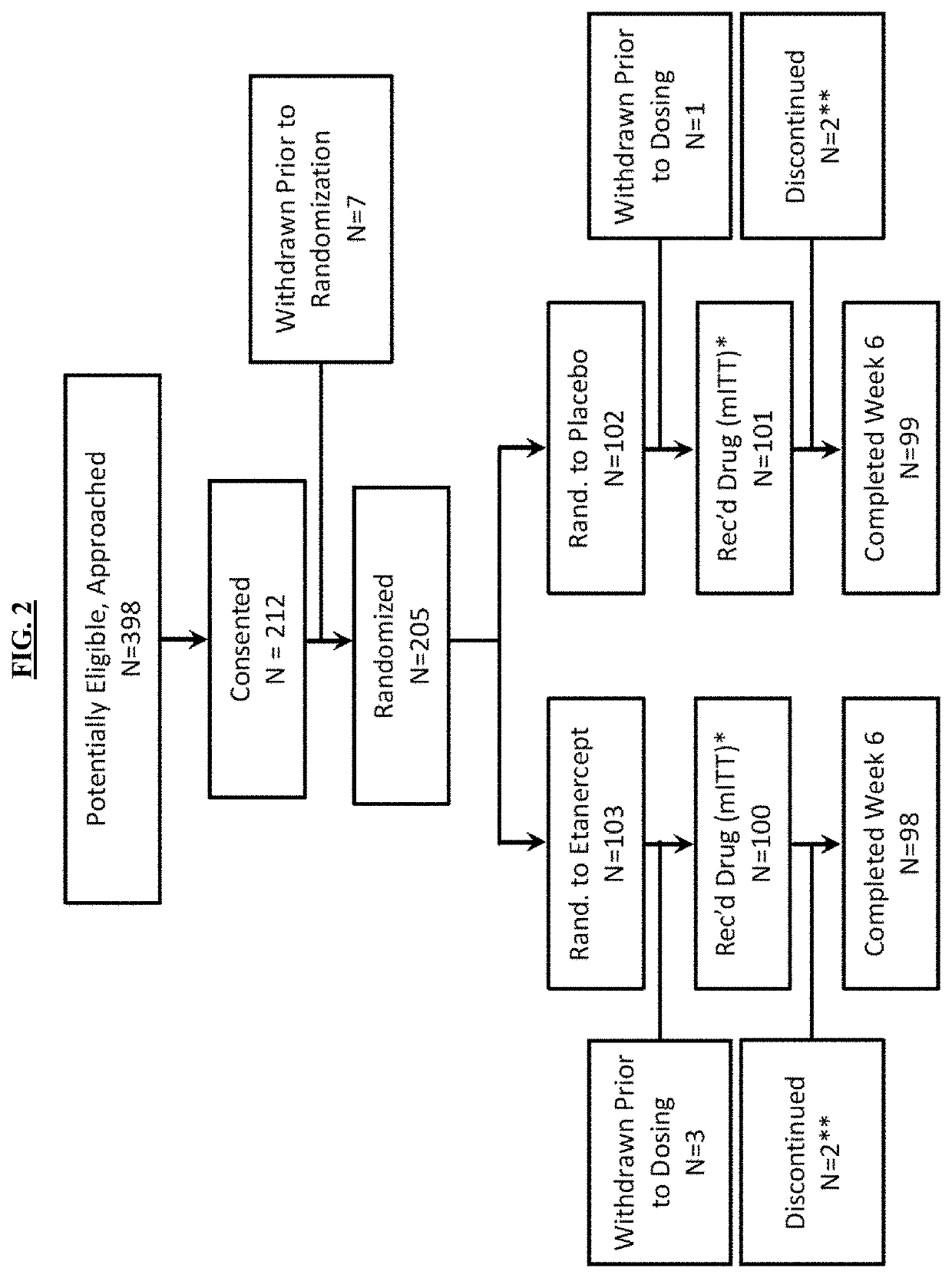Methods of treating kawasaki disease
a technology of kawasaki disease and kawasaki artery, which is applied in the field of kawasaki disease treatment methods, can solve the problems of kd producing long-standing coronary artery pathology, fever either not resolved or recurrence, and can cause recurrence, so as to reduce or prevent ivig resistance, improve or prevent progression, and promote the effect of coronary artery dilation
- Summary
- Abstract
- Description
- Claims
- Application Information
AI Technical Summary
Benefits of technology
Problems solved by technology
Method used
Image
Examples
example 1
ry Studies
[0179]Open Label Study.
[0180]An open label nonrandomized study evaluating safety and pharmacokinetics of Etanercept in patients aged 6 months to 5 years was performed. 12 patients were enrolled in the preliminary study. The first 5 patients received 0.4 mg / kg etanercept subcutaneously, and patients thereafter received 0.8 mg / kg. Doses were given within 12 hours of completing IVIG infusion, at 7 days and at 14 days (see Table 1). Demographics of patients are shown in Table 2.
TABLE 2Demographics For Etanercept SubjectsSubjectWeight (kg)Age (months)116.146213.125313.92746.99531.46769.911712.035823.555914.541107.7111115.7571212.227MEAN14.734.25STDEV6.819.3
[0181]Safety.
[0182]No patient required readmission after initial discharge. Two patients had mild upper respiratory infections associated with similar symptoms in family members after discharge; one of these had a single fever spike 3 weeks after IVIG treatment, which resolved quickly without treatment other than acetaminophe...
example 2
[0190](a) Trial Design
[0191]The effects of etanercept were tested in a Phase 3 multi-center, placebo-controlled, double blind investigator initiated randomized trial. The study received drug, and placebo from Amgen.
[0192]Study Endpoints
[0193]The primary endpoint was proportion of participants with fever persistence or recurrence greater than 36 hours and up to 7 days following completion of the IVIG infusion. Comparisons for IVIG non-response risk between placebo and treatment groups within important demographic subgroups: age (1 year), gender, race and ethnicity (Non-Hispanic White, NHW; African American, AA; Asian, EAS, Hispanic, HIS) were preplanned. Echocardiographic coronary artery parameters served as secondary endpoints and were based on changes in absolute values according to an algorithm found in FIG. 3. Coronary artery dimensions were also normalized for body surface area as z scores (SDs from a predicted normal mean) based on published Boston criteria (McCrindle, et al., ...
PUM
| Property | Measurement | Unit |
|---|---|---|
| concentration | aaaaa | aaaaa |
| concentration | aaaaa | aaaaa |
| concentration | aaaaa | aaaaa |
Abstract
Description
Claims
Application Information
 Login to View More
Login to View More - R&D
- Intellectual Property
- Life Sciences
- Materials
- Tech Scout
- Unparalleled Data Quality
- Higher Quality Content
- 60% Fewer Hallucinations
Browse by: Latest US Patents, China's latest patents, Technical Efficacy Thesaurus, Application Domain, Technology Topic, Popular Technical Reports.
© 2025 PatSnap. All rights reserved.Legal|Privacy policy|Modern Slavery Act Transparency Statement|Sitemap|About US| Contact US: help@patsnap.com



